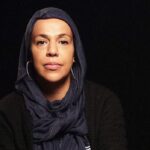Editorial | Winter/Spring 2019
Grant Kester
FIELD is pleased to announce the launch of a special double issue (winter and spring 2019) focusing on new forms of cultural and artistic activism that have emerged in response to the global rise of right wing populist and authoritarian forms of government. The issue has been guest edited by Greg Sholette, a FIELD board member and a key figure in the area of socially engaged art practice, criticism and scholarship for the past three decades. It features over thirty essays by leading artists, activists, historians, critics and curators who share a commitment to freedom of expression, economic equality, environmental justice, individual identity and mobility, and the expansion of democratic processes. I want to begin by thanking Greg, his remarkable team of contributors, and the FIELD editorial collective (Erika Barbosa, Noni Brynjolson, Paloma Checa-Gismero, Jonah Gray, Alex Kershaw and Jordan Rose at UCSD) for bringing this important issue to fruition. It’s over three times as long as a typical FIELD issue and its assembly entailed a great deal of hard work. This issue grew out of conversations we had about the ways in which socially engaged art has responded to the changing geo-political landscape in the wake of Trump and Brexit. Of course the repercussions of what we might term ‘neo-authoritarianism’ extend far beyond the specific situations of the U.S. and the U.K., as our contributors convincingly demonstrate. We find manifestations ranging from Recip Erdoğan in Turkey, to the recent election of the “Brazilian Trump” Jair Bolsonaro, the growing violence of Mohammad Bin Salman of Saudi Arabia, the rise of Alternative für Deutschland, and Xi Jinping’s increasingly autocratic rule in China.
Greg will address the specific features of this issue, and his vision for it, in his introduction. Here I will simply offer a couple of general observations. The shift towards authoritarian rule is directly correlated with the ongoing economic and social dislocations generated by neo-liberal economic policies, which have given rise to growing class tensions and resentments. These tensions, of course, pose a very real threat to the economic elites who are the primary beneficiaries of neo-liberal capitalism. As Adorno pointed out many years ago, one of the typical features of authoritarian rule is a projective identification with a “strong” leader in times of perceived crisis. This is typically accompanied by a process of ideological displacement requiring the invention of various antagonists against whom the strong leader will offer protection. Instead of identifying the source of economic suffering in the systemic mechanisms of global capitalism, and the entrenched interests of its institutional gatekeepers, the mechanisms of neo-populism provide a series of caricatured Others on whom to place the blame, and direct the rage (the terrorist, the illegal immigrant, the non-native Turk, etc.). While this process has its own unique character today it is hardly unique to the current historical moment. In the U.S. it is rooted in a mutually-reinforcing system of class and race oppression that finds a key locus in the foundation of the KKK in the post-Civil War era. Wealthy planters, fearing the threat to their power posed by the potential alliance of freed blacks and working class whites, deliberately sought to cultivate racial hatred and fear among poor and working class tenant farmers. With the re-birth of the KKK during the 1920s this process metastasized to encompass new generations of immigrants coming to the U.S. from southern and eastern Europe.
As this example suggests, it’s essential to understand the historical context, and structural differentiation, of repressive systems of social control. Domination is not a fixed or static thing, to be analyzed in abstraction. It is a living culture that evolves and modifies itself over time and through the exigencies of historical development and ongoing opposition. What are the particular forms and modalities taken by repressive systems? How do they respond to provocation, assault or subversion? What are the potential parameters of resistance in a given social context? At the same time, as we seek to challenge new forms of authoritarian rule, it is also necessary to understand the underlying continuities, in both modalities of repression and in the tactical and strategic responses to it. Greg’s issue of FIELD provides an invaluable resource for this process, by helping us understand, in a comparative manner, the lessons of resistance in our current moment across a broad range of cultural and political settings. It allows us, as well, to learn from and about each other, opening up the possibility of alliances and exchanges across a diverse network of activists and artists. I should note here that a number of these essays were completed during the past summer and, as is often the case, events on the ground may have changed since then.
I want to conclude by acknowledging three important new books by writers who are part of the FIELD family. The first is from Justin Jesty, the guest editor of our two-part special issue on socially engaged art in Japan (issues #7 and #8). Justin’s new book, Art and Engagement in Early Postwar Japan, was just published by Cornell University Press. It offers the first extended English-language analysis of the emergence of socially engaged art practices in Japan during the 1950s and ’60s. Forthcoming from Rutgers University Press (this May) is an important new book by Carlos Garrido Castellano, Beyond Representation in Contemporary Caribbean Art: Space, Politics and the Public Sphere. Carlos’s book examines the complex cultural politics embodied in new forms of artistic practice in Jamaica, Trinidad, Martinique, Guadeloupe, Cuba, Dominican Republic, Puerto Rico and Caribbean diasporic communities in the U.S., as they relate to issues of social justice, immigration and citizenship. Finally, I want to acknowledge a new book by our guest editor Greg Sholette and Chloë Bass, his colleague in the Queens College Social Practice program. The book, Art as Social Action: An Introduction to the Principles and Practices of Teaching Social Practice Art, was published this year by Allworth Press and provides a comprehensive overview of the “principles and practices” of social practice art, with contributions from many of the leading voices in the field. All three of these books demonstrate the remarkable geographic and geo-political scope of engaged arts research and practice, as well as its growing methodological complexity.











